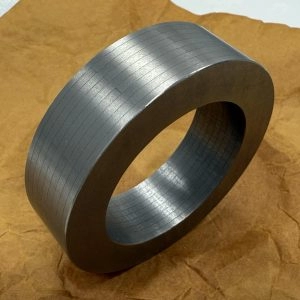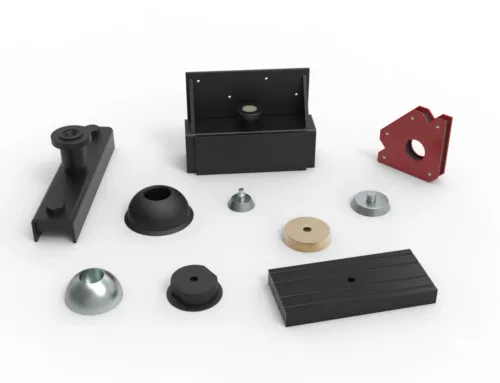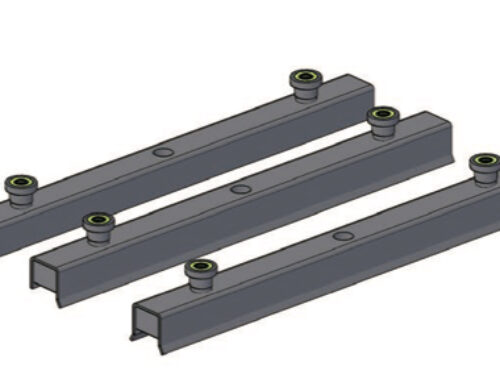Vertical mobility is evolving fast, and specialized magnetic systems for vertical mobility solutions are at the forefront of this transformation. Whether it’s high-speed elevators, quiet escalators, or futuristic contactless lifts, magnetic technologies are redefining how we move up and down. From magnetic bearings that cut friction to magnetic brakes that ensure safety, these advanced components are unlocking new levels of efficiency, reliability, and performance. If you’re looking to stay ahead in urban transport innovation, understanding how NBAEM’s magnetic materials can power your vertical mobility projects is an absolute must. Let’s explore how these cutting-edge magnetic systems are revolutionizing vertical transport—making it smoother, safer, and smarter than ever before.
Understanding Vertical Mobility Solutions
Vertical mobility solutions refer to technologies and systems designed to transport people and goods efficiently and safely across different vertical levels in buildings and infrastructure. This includes elevators, escalators, automated lifts, and emerging vertical transportation robots. These systems play a crucial role in urban environments, commercial complexes, residential buildings, and industrial settings.
Current challenges in vertical mobility focus on improving efficiency, safety, noise reduction, and maintenance. Elevators and escalators must operate smoothly and reliably while minimizing energy consumption. Safety remains paramount, requiring advanced monitoring and fail-safe mechanisms. Noise and vibration reduction improve passenger comfort but demand innovative design solutions. Maintenance challenges involve extending component lifespan and reducing downtime through smarter diagnostics and durable materials.
Specialized Magnetic Systems An Overview
Specialized magnetic systems play a key role in improving vertical mobility solutions like elevators, escalators, and automated lifts. These systems include magnetic bearings that reduce friction and wear, magnetic levitation (maglev) technology for contactless movement, magnetic brakes that ensure smooth and fail-safe stopping, as well as sensors and actuators that provide precision control and safety monitoring.
Different types of magnetic materials power these systems. Permanent magnets, known for their lasting magnetic properties, are widely used alongside soft magnets, which are great for efficient magnetic flux control. Rare earth magnets, including neodymium types, deliver high magnetic strength essential for demanding vertical transportation applications. NBAEM offers a broad product range covering these materials, tailored for optimal performance in vertical mobility. You can explore more about these magnetic technologies on NBAEM’s dedicated page.
Compared to traditional mechanical parts, magnetic systems provide several advantages:
- Reduced friction and wear, extending component life and lowering maintenance needs.
- Quieter and smoother operation, enhancing passenger comfort.
- Improved energy efficiency thanks to contactless or near-contact movement.
- Greater precision and reliability through advanced magnetic sensors.
- Fail-safe features, especially in braking systems, increase safety.
Key Applications of Magnetic Systems in Vertical Mobility
Magnetic bearings play a crucial role in high-speed elevators by cutting down friction and wear. This means smoother rides, less mechanical breakdown, and longer equipment life—something every building owner in the U.S. values.
Magnetic levitation technology is leading the way for next-generation vertical lifts. By eliminating physical contact, these contactless lifts reduce noise, vibration, and maintenance needs, making them perfect for busy urban spaces where efficiency and comfort are essential.
Magnetic brakes offer a fail-safe and smooth stopping system. Unlike traditional brakes, they don’t rely on friction alone, so they work reliably even during power failures, enhancing safety for passengers.
Magnetic sensors provide precise control and continuous safety monitoring in elevators and escalators. These sensors track position and speed accurately, allowing for real-time adjustments to improve performance and prevent accidents.
Several case studies showcase the success of magnetic system integration worldwide, including in China and here in the U.S. For example, China’s rapid adoption of maglev elevators in skyscrapers demonstrates the technology’s practical benefits, while U.S.-based projects have highlighted energy savings and reduced downtime thanks to advanced magnetic bearings and sensors.
Together, these magnetic systems are transforming vertical mobility—making it safer, quieter, and more efficient for buildings across the country.
NBAEM’s Specialized Magnetic Solutions for Vertical Mobility
NBAEM offers magnetic materials specifically designed for vertical mobility applications, including elevators, escalators, and automated lifts. Their products are engineered to meet the unique demands of vertical transportation, ensuring high magnetic strength, excellent temperature resistance, and robust durability for long-term performance.
Customization is a key part of NBAEM’s service. They tailor magnetic properties to fit different operational requirements, whether you need stronger magnets for high-speed elevators or materials that withstand harsh environments. This flexibility helps manufacturers optimize efficiency and safety in their vertical mobility systems.
NBAEM maintains strict quality standards, complying with international certifications to guarantee reliability and performance. Their magnetic materials are tested thoroughly to meet industry benchmarks, providing peace of mind for all vertical transport projects.
The company collaborates closely with vertical mobility manufacturers and developers both in China and internationally. These partnerships focus on integrating NBAEM’s advanced magnetic solutions into cutting-edge elevator and lift designs, helping drive innovation in the U.S. market and beyond.
Benefits of Using NBAEM’s Magnetic Systems in Vertical Mobility

Choosing NBAEM’s magnetic systems for vertical mobility brings clear advantages that matter to US builders, manufacturers, and facility managers:
-
Enhanced Operational Efficiency and Energy Savings
NBAEM’s high-performance magnetic materials reduce friction and energy loss in elevator bearings and motors, cutting power use significantly. This means smoother rides and lower utility bills.
-
Increased Safety and Reliability
Magnetic brakes and sensors provide precise control and fail-safe stopping, reducing the risk of accidents. These systems are less prone to mechanical wear, ensuring consistent performance over time.
-
Lower Maintenance Costs and Longer Lifecycle
With fewer moving mechanical parts wearing down, magnetic systems minimize downtime and maintenance expenses. Their durability means fewer replacements and less labor, saving money in the long run.
-
Quieter, Smoother Rides for Elevators and Escalators
Magnetic bearings and levitation reduce vibration and noise, creating a more comfortable experience in residential and commercial buildings.
-
Supporting Sustainable and Eco-Friendly Solutions
NBAEM’s magnetic materials promote energy efficiency and reduce environmental impact by supporting lightweight components and longer-lasting systems, aligning with green building goals.
| Benefit | Impact |
|---|---|
| Operational Efficiency | Lower energy consumption and smoother rides |
| Safety and Reliability | Precise control, fail-safe stopping |
| Maintenance Costs | Reduced service needs and longer part life |
| Ride Quality | Quieter, more comfortable vertical transport |
| Sustainability | Supports eco-friendly, energy-smart designs |
These benefits make NBAEM’s magnetic systems a smart choice for modern vertical mobility solutions in the US market, offering both operational gains and long-term value. For more on magnetic materials suitable for these applications, visit NBAEM’s type of magnetic materials.
Technical Considerations and Design Tips for Implementing Magnetic Systems
When adding specialized magnetic systems to vertical mobility solutions like elevators and escalators, it’s important to plan carefully to get the best results.
Integration Challenges and Solutions
- Space constraints: Vertical mobility systems have limited space. Choose compact magnetic components designed to fit tight areas.
- Compatibility: Ensure magnetic parts work smoothly with existing mechanical and electronic systems. Early collaboration with manufacturers helps avoid mismatches.
- Electromagnetic interference (EMI): Use shielding techniques or select magnetic materials that minimize EMI to prevent signal disruptions.
Material Selection Based on Application Requirements
Choosing the right magnetic material depends on these key factors:
| Application Need | Recommended Magnetic Material | Reason |
|---|---|---|
| High magnetic strength | Rare earth magnets (NdFeB, SmCo) | Provides strong, stable fields |
| Temperature resistance | SmCo or specially coated NdFeB magnets | Maintains performance under heat |
| Wear resistance | Soft magnets with good abrasion properties | Reduces friction and extends life |
| Cost-effectiveness | Ferrite magnets | Lower cost, suitable for less demanding parts |
For detailed insights on magnetic materials, check our page on soft magnetic materials vs hard magnetic materials.
Thermal Management and Durability Under Load
- Magnetic components can heat up during operation, impacting performance. Incorporate heat sinks or cooling systems where necessary.
- Use materials rated for the maximum temperature expected in your application to avoid demagnetization or material degradation.
- Test durability under repeated mechanical stress to ensure the magnetic systems withstand daily wear and tear.
Design Best Practices to Maximize Performance
- Optimize magnetic circuit design to focus magnetic flux where it’s needed and minimize losses.
- Use modular magnetic systems for easier maintenance and replacements.
- Employ magnetic sensors for real-time feedback that adjusts system behavior proactively.
- Plan for redundancy in critical components like magnetic brakes to enhance safety.
By addressing these technical factors early, you ensure your vertical mobility solution runs efficiently, safely, and reliably over the long term.
Future Trends and Innovations in Magnetic Vertical Mobility Technologies
Magnetic vertical mobility is evolving fast with smart materials that can sense and adapt to changing conditions. These smart magnetic materials improve performance by adjusting their properties in real-time, helping elevators and lifts run smoother and safer.
We’re also seeing more integration with IoT and AI for predictive maintenance. Sensors powered by magnetic systems collect data continuously, and AI analyzes this to spot wear or faults before they cause breakdowns. This means less downtime and lower maintenance costs for building owners.
The push toward fully contactless vertical mobility systems is gaining ground. Magnetic levitation technology enables lifts that move without physical contact, reducing friction and wear drastically. These systems not only extend equipment life but also create quieter, more energy-efficient rides.
On a larger scale, these advances are shaping urban infrastructure and smart cities. Magnetic systems enable more reliable, efficient vertical transport that fits well into smart building designs and sustainable city plans. This tech can support higher traffic volumes and improve facility safety while reducing energy consumption.
How to Partner with NBAEM for Your Vertical Mobility Projects
Partnering with NBAEM for your vertical mobility solutions is straightforward and tailored to meet your specific needs. Here’s how you can get started:
Ordering Customized Magnetic Materials
We offer a streamlined process for ordering customized magnetic systems, including magnetic bearings, magnetic levitation components, brakes, and sensors. Simply provide your project requirements—such as size, magnetic strength, temperature resistance, and durability—and our team will guide you through material selection and customization options. This ensures the magnetic materials perfectly fit your vertical transportation design.
Consulting and Technical Support
NBAEM isn’t just a supplier; we’re your technical partner. Our experienced engineers provide consulting services to help you integrate advanced magnetic systems efficiently and solve design challenges. Whether it’s optimizing magnetic bearings for high-speed elevators or implementing magnetic sensors for safety monitoring, we offer hands-on support throughout your project.
Contact and Local Service Options
NBAEM serves clients across the United States, China, and internationally, with dedicated support teams ready to assist locally and remotely. For U.S.-based companies, we ensure timely communication and tailored service to meet local market demands. Reach out via our website or customer service channels for fast responses and detailed project assistance.
Partner with NBAEM to leverage high-performance magnetic materials designed to enhance the efficiency, safety, and sustainability of your vertical mobility solutions. Visit our magnetic material types page and explore our full range of magnetic assemblies to learn more about what we offer.





Leave A Comment